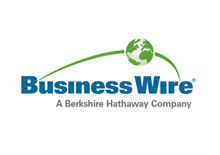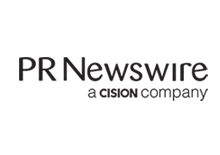Global Carbon Fibers Market Outlook to 2026 Featuring 3M Co, Toray Industries, SABIC, BASF SE, Teijin Limited, ELG Carbon Fibre, Koninklijke DSM N.V., Trelleborg, Kureh - ResearchAndMarkets.com
The "Global Carbon Fibers Market Outlook to 2026" report has been added to ResearchAndMarkets.com's offering.
Carbon Fiber market is expected to witness a significant growth rate during the forecasted period. Factors like the growing use of Carbon Fibers in the Aerospace industry to reduce the aircraft's overall weight, hence giving better fuel efficiency, are expected to drive the Global Carbon Fiber Market.
Further, the usage of Carbon Fibers in the Automobile industry to produce a reduction in weight, part integration and reduction, crashworthiness, durability, toughness, and aesthetic appealing is projected to drive the Global Carbon Fibers Market. Furthermore, the use of carbon fibers for making windmill blades used to harness wind electricity, due to its lightweight properties reducing overall weight by nearly 25%, is expected to drive the Global Market.
Carbon fibers are also employed in the sports industry, where they are preferred for producing equipment like sticks and rackets due to advanced properties such as lightweight and high strength to weight ratio. However, factors like the fluctuating raw material prices and the exorbitant price of carbon fibers both in terms of production and usage are expected to hinder the Global Carbon Fiber market growth.
Carbon Fiber has found varied applications across industries due to its advanced properties, primarily due to it being strong, stiff, and lightweight, proving to be a metal alternative. Some of its applications include uses in the aerospace, road, and marine transport, sporting goods, Missiles, aircraft brakes, aerospace antenna and support structure, large telescopes, optical benches, Audio equipment, loudspeakers for Hi-fi equipment, pickup arms, robot arms, Automobile hoods, novel tooling, casings and bases for electronic equipment, EMI and RF shielding, brushes, among others.
The Aerospace Industry is the primary consumer of carbon fibers where their use is projected to drive the Global Market. Advanced physical and mechanical properties such as being lightweight, having tensile strength, high impact resistance, being fuel-efficient, and reliability as a metal alternative have made Carbon Fibers a critical material used in essential components.
Further, strict environmental norms being laid down by countries and agencies have made it all the more necessary for airplane builders to build lightweight and fuel-efficient airplanes, driving the global carbon fibers market.
Furthermore, Carbon Fiber-reinforced plastic, or CFRP, is broadly used in modern-day airplanes, including theAirbusA350 XWB, whose wing comprises the lightweight carbon composites, CFRP. Airplane manufacturers mainly use Carbon Fibers because they are lighter than aluminum, more potent than iron, and more corrosion-resistant than both, thus making their way to mission-critical components like wings, fuselage, and cockpits and tail, etc.
With a narrow body and long-range aircraft like Airbus A350 XWB, A320 Neo, Boeing 787, Boeing 737 gaining prominence and airlines buying them due to better operational costs and enhanced profitability, the global demand for Carbon Fibers is projected to grow. Rising oil prices, global warming, and increased awareness have led to countries shifting towards lighter and efficient aircraft. Thus all the factors have added to the growth of the worldwide Carbon Fiber market.
Some of the market's key players are The 3M Company, Toray Industries, Inc., SABIC, BASF SE, Teijin Limited, ELG Carbon Fibre Ltd, Koninklijke DSM N.V., Trelleborg AB, Kureha Corporation, among others.
Key Topics Covered:
1. Executive Summary
2. Research Scope and Methodology
3. Market Analysis
3.1 Introduction
3.2 Market Dynamics
3.3 Market Trends & Developments
3.4 Market Opportunities
3.5 Regulatory Policies
3.6 Analysis of Covid-19 Impact
4. Industry Analysis
4.1 Supply Chain Analysis
4.2 Porter's Five Forces Analysis
5. Market Segmentation & Forecast
5.1 By Raw Material
5.1.1 PAN-based Carbon Fiber
5.1.2 Pitch-based Carbon Fiber
5.2 By Form
5.2.1 Composite Carbon Fiber
5.2.2 Non-Composite Carbon Fiber
5.3 By Fiber Type
5.3.1 Virgin Carbon Fiber
5.3.2 Recycled Carbon Fiber
5.4 By Product Type
5.4.1 Continuous Carbon Fiber
5.4.2 Long Carbon Fiber
5.4.3 Short Carbon Fiber
5.5 By Modulus
5.5.1 Standard Modulus
5.5.2 Intermediate Modulus
5.5.3 High Modulus
5.6 By Tow Size
5.6.1 Small Tow (< =24k)
5.6.2 Large Tow (>24k)
5.7 End-Use Industries
5.7.1 Aerospace
5.7.2 Automotive
5.7.3 Energy
5.7.4 Others
6. Regional Market Analysis
6.1 North America
6.1.1 United States
6.1.2 Canada
6.1.3 Mexico
6.2 Europe
6.2.1 Germany
6.2.2 United Kingdom
6.2.3 Italy
6.2.4 France
6.2.5 Spain
6.2.6 Rest of Europe
6.3 Asia-Pacific
6.3.1 China
6.3.2 India
6.3.3 Japan
6.3.4 South Korea
6.3.5 Rest of Asia-Pacific
6.4 South America
6.4.1 Brazil
6.4.2 Argentina
6.4.3 Rest of South America
6.5 Middle East & Africa
6.5.1 South Africa
6.5.2 Saudi Arabia
6.5.3 Rest of Middle East & Africa
7. Key Company Profiles
7.1 Toray Industries, Inc.
7.2 The 3M Company
7.3 SABIC
7.4 BASF SE
7.5 Kureha Corporation
7.6 Teijin Limited
7.7 ELG Carbon Fibre Ltd
7.8 Koninklijke DSM N.V.
7.9 Trelleborg AB
7.10 DowAksa Advanced Composites Holdings BV
7.11 Nippon Graphite Fiber Corporation
7.12 Zhong An Xin Technology Co., Ltd.
7.13 Celanese Corporation
7.14 Solvay SA
7.15 Dalian Xingke Carbon Fiber Co., Ltd.
7.16 Formosa Plastics Corporation
7.17 Lubrizol Corporation
7.18 Kuraray Co. Ltd
7.19 Ineos Group Ltd.
7.20 Taekwang Industries Co., Ltd.
7.21 Jilin Qifeng Chemical FiberCo., Ltd.
7.22 Hexcel Corporation
7.23 SGL Carbon
7.24 Hyosung Advanced Materials
7.25 Momentive Performance Materials Inc.
7.26 Avient Corporation
7.27 Victrex Plc
7.28 Covestro AG
7.29 Huntsman Corporation
7.30 ENEOS Corporation
7.31 Mitsubishi Chemical Holdings
7.32 Umatex
8. Competitive Landscape
8.1 List of Notable Players in the Market
8.2 M&A, JV, and Agreements
8.3 Market Share Analysis
8.4 Strategies of Key Players
9. Conclusions and Recommendations
For more information about this report visit https://www.researchandmarkets.com/r/z7olva
View source version on businesswire.com: https://www.businesswire.com/news/home/20211110005753/en/


